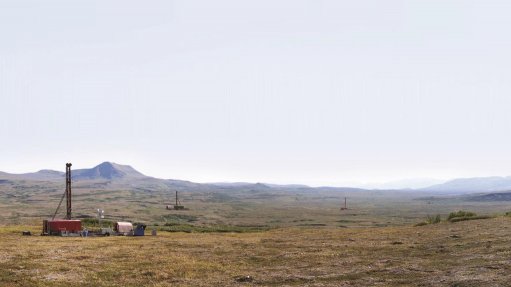
Pebble
Photo by: Northern Dynasty Minerals
TORONTO (miningweekly.com) – The proponent of one of the world’s largest undeveloped deposits, Northern Dynasty Minerals, on Tuesday announced that it had appointed US regulatory lawyer and former chief of staff in the US Department of Interior Thomas Collier as new CEO of its Pebble Limited Partnership, replacing John Shively.
A former commissioner of the Alaska Department of Natural Resources and chief of staff to former Alaska Governor Bill Sheffield, Shively was named chairperson of Pebble Mines Corp, and he would continue to play an active role on the Pebble strategic leadership team.
Northern Dynasty’s flagship project is the controversial Pebble copper/gold/molybdenum project, in Alaska, which had been the subject of substantial environmentalist objections.
"Resolving complex, challenging and controversial development projects has been the major focus of my career for the past several decades, so I welcome the challenge of serving as Pebble CEO," Collier said.
"I will immediately focus my energies on preparing the strategy and scientific resources necessary to secure federal and state permits for the construction and operation of a modern, long-life mine at Pebble in the years ahead."
Collier's 40-year career, spent mainly as a partner at Steptoe & Johnson in Washington DC, included extensive natural resource sector experience, particularly as it relates to federal regulation and permitting.
He specialises in providing strategic leadership to companies navigating federal environmental permitting processes, specifically the environmental-impact statement (EIS) process under the National Environmental Policy Act (Nepa) and 404 wetlands permitting under the Clean Water Act.
Collier had played a senior role on several significant projects that successfully secured federal permits in Alaska - including reauthorisation of the Alyeska Pipeline Service's Trans-Alaska Pipeline System and several developments undertaken by ConocoPhillips.
"From my experience, I have developed three key principles that I believe are essential to resolving the kind of environmental controversy we see at Pebble.
“First, natural resource development and environmental protection can and do co-exist; second, science is the key to resolving such controversies; and third, the Nepa-required EIS process is the best way to resolve scientific disagreements. I am bringing these lessons and my extensive experience with the section 404 permitting process to Pebble, and I'm confident that this great project will be permitted and built in Alaska,” Collier said.
"Today's announcement has only strengthened our corporate and project leadership team at Pebble. We look forward with great enthusiasm to the next major milestones for this project - announcing a new major funding partner and initiating project permitting under Nepa,” Northern Dynasty president and CEO Ron Thiessen said.
Last month, the US Environmental Protection Agency published the final version of its Bristol Bay Watershed Assessment, which Northern Dynasty believed was fundamentally flawed.
Thiessen at the time said the company was looking forward to defining a proposed development plan for Pebble and to having it reviewed by federal and state regulatory agencies under Nepa in the months and years ahead.
"We have every expectation that the EIA process required by Nepa, to be administered by the US Army Corps of Engineers, will ultimately provide a much more rigorous, fair and transparent review of the science surrounding this important project,” Thiessen said.
Global miner Rio Tinto in December said it was considering selling its stake in Northern Dynasty. Rio owns a 19.1% stake in Northern Dynasty through a subsidiary, making it the largest single investor.
Northern Dynasty's partner in Pebble, Anglo American, pulled out in September, as part of its plan to cut the cost of future options and halve its $17-billion pipeline of potential mines.